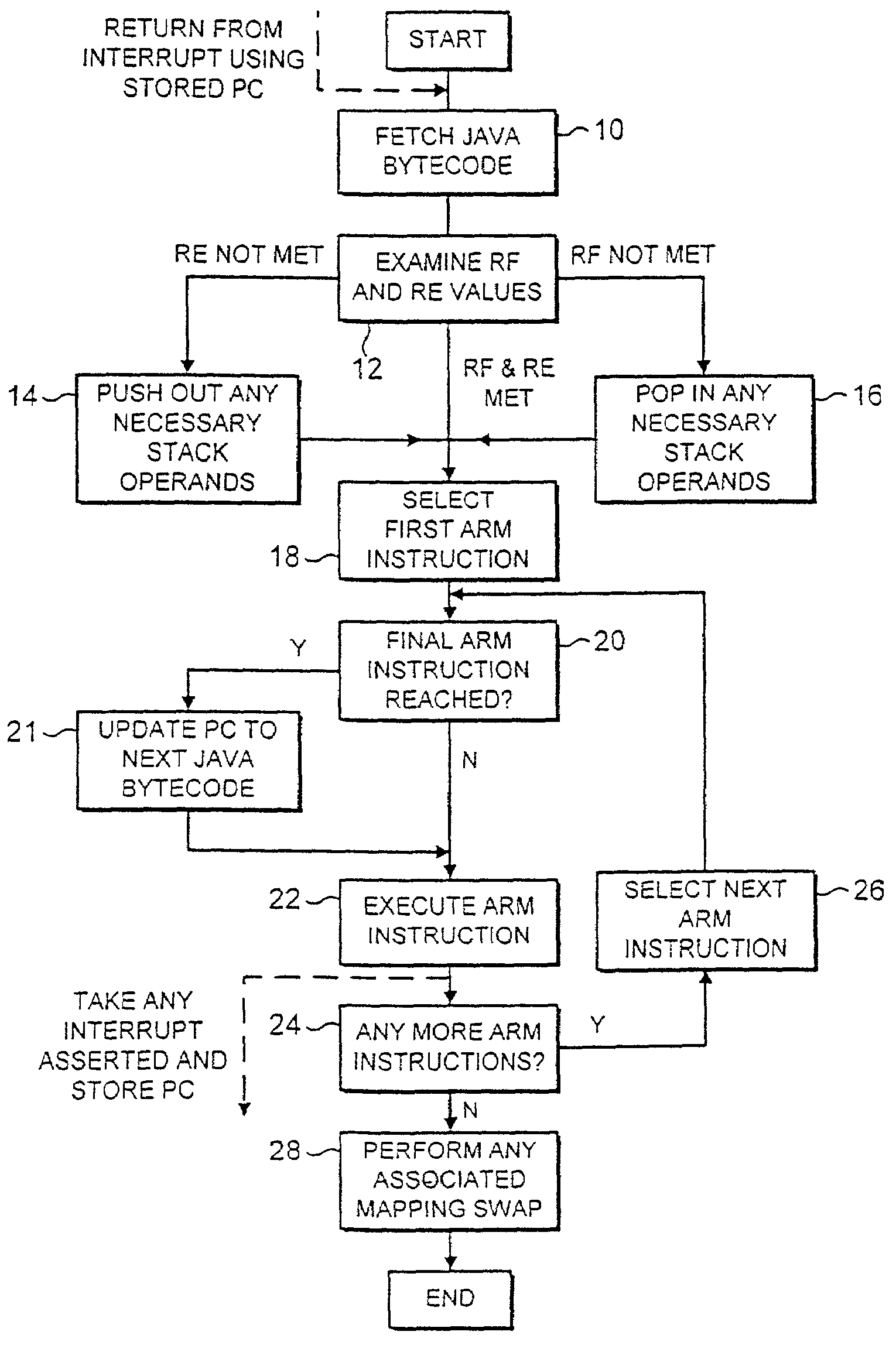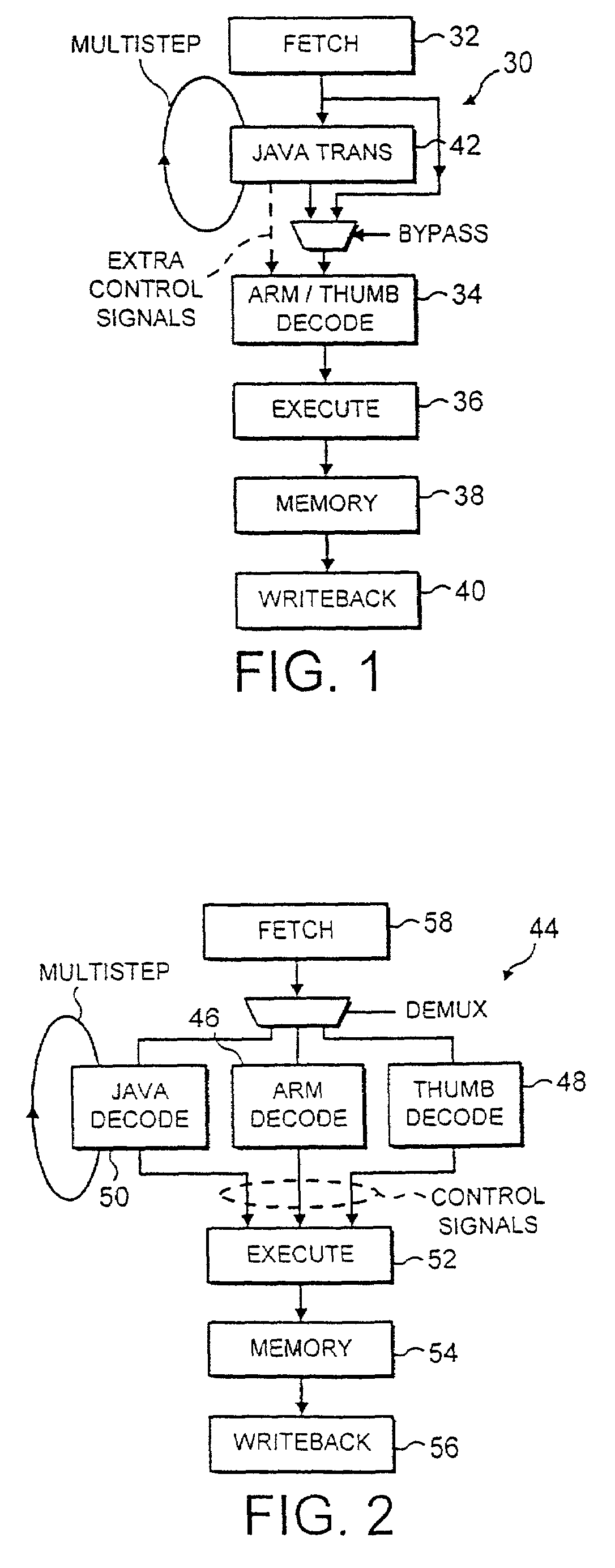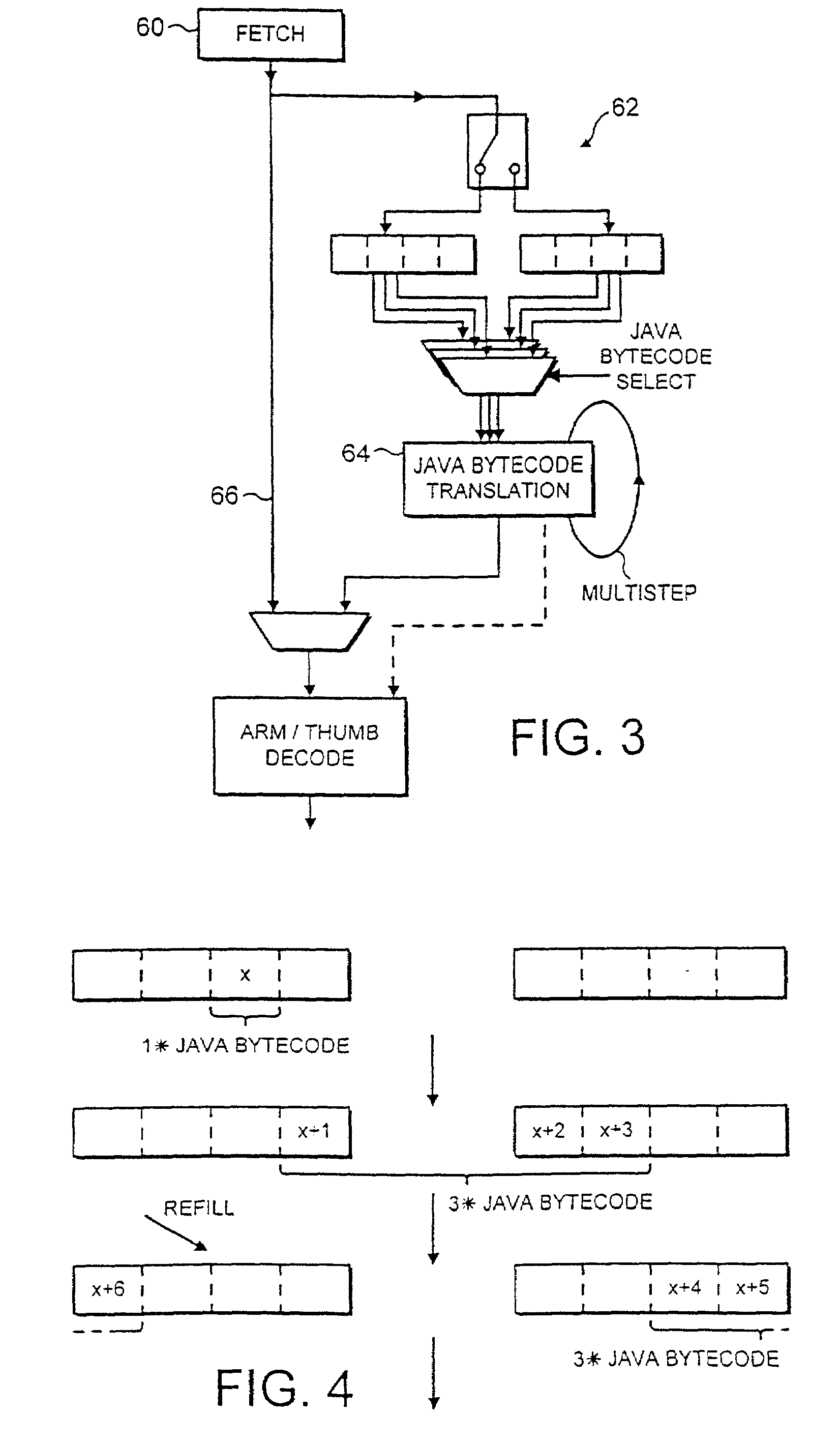Restarting translated instructions
a translation instruction and translation technology, applied in the field of data processing systems, can solve the problems bringing with it certain difficulties and complications, and unable to deal with interrupt signals, etc., and achieve the effect of affecting the processing speed of non-native instructions and interrupt delays
- Summary
- Abstract
- Description
- Claims
- Application Information
AI Technical Summary
Benefits of technology
Problems solved by technology
Method used
Image
Examples
Embodiment Construction
[0046]FIG. 1 shows a first example instruction pipeline 30 of a type suitable for use in an ARM processor based system. The instruction pipeline 30 includes a fetch stage 32, a native instruction (ARM / Thumb instructions) decode stage 34, an execute stage 36, a memory access stage 38 and a write back stage 40. The execute stage 36, the memory access stage 38 and the write back stage 40 are substantially conventional. Downstream of the fetch stage 32, and upstream of the native instruction decode stage 34, there is provided an instruction translator stage 42. The instruction translator stage 42 is a finite state machine that translates Java bytecode instructions of a variable length into native ARM instructions. The instruction translator stage 42 is capable of multi-step operation whereby a single Java bytecode instruction may generate a sequence of ARM instructions that are fed along the remainder of the instruction pipeline 30 to perform the operation specified by the Java bytecode...
PUM
 Login to View More
Login to View More Abstract
Description
Claims
Application Information
 Login to View More
Login to View More - R&D
- Intellectual Property
- Life Sciences
- Materials
- Tech Scout
- Unparalleled Data Quality
- Higher Quality Content
- 60% Fewer Hallucinations
Browse by: Latest US Patents, China's latest patents, Technical Efficacy Thesaurus, Application Domain, Technology Topic, Popular Technical Reports.
© 2025 PatSnap. All rights reserved.Legal|Privacy policy|Modern Slavery Act Transparency Statement|Sitemap|About US| Contact US: help@patsnap.com



